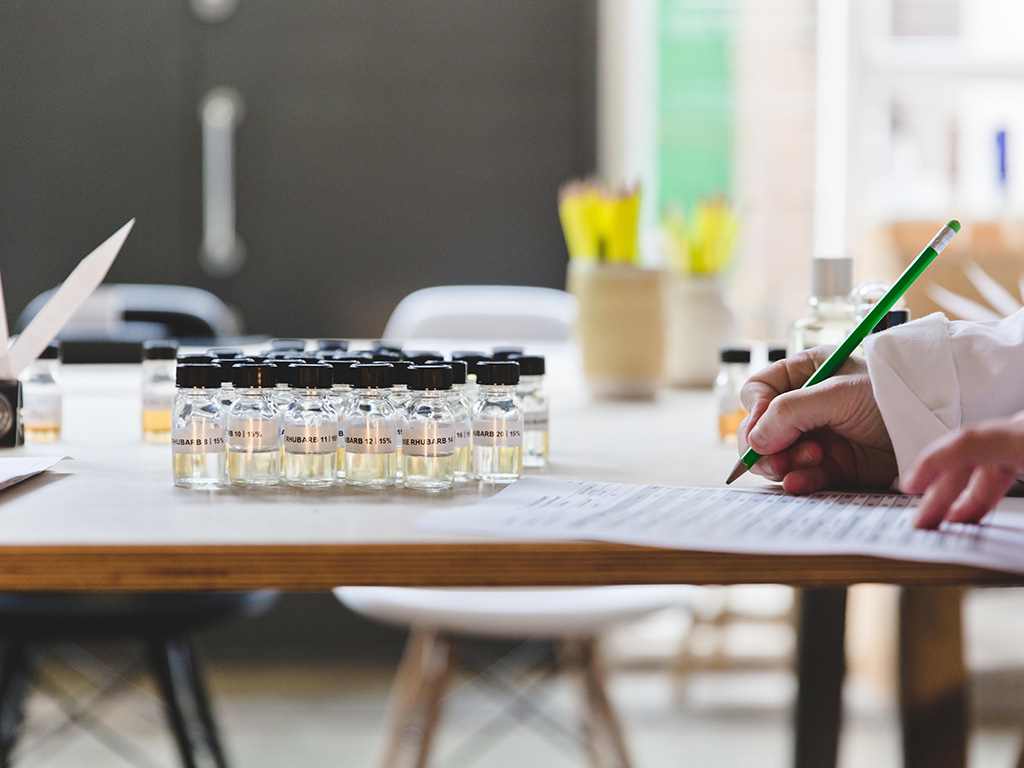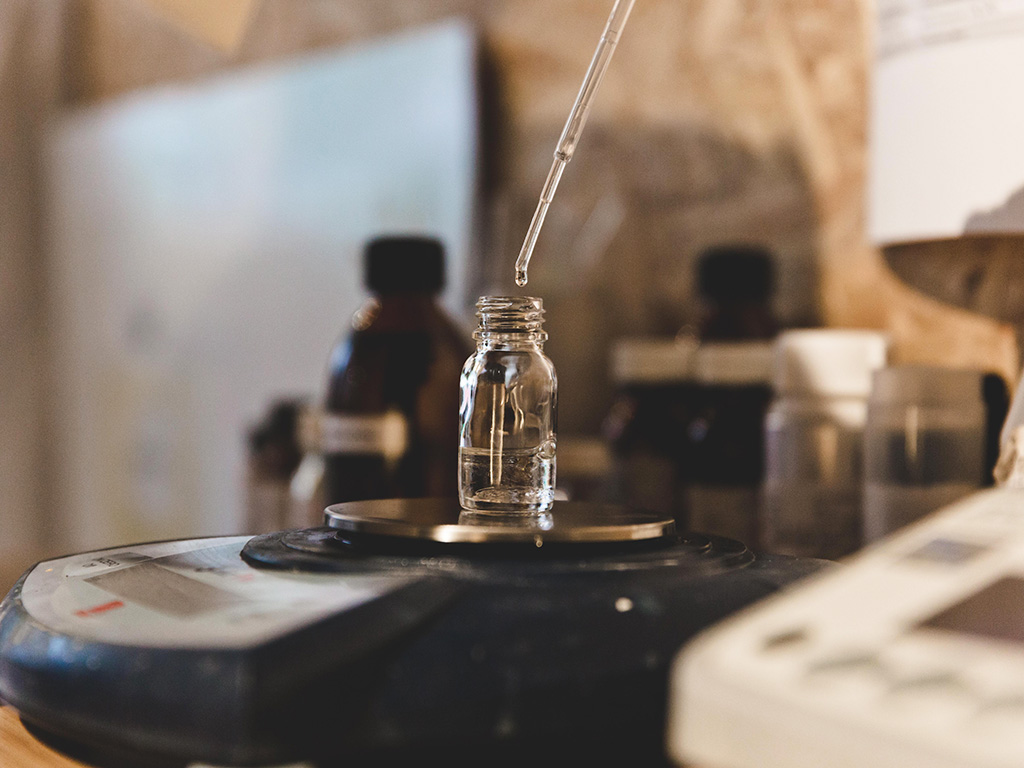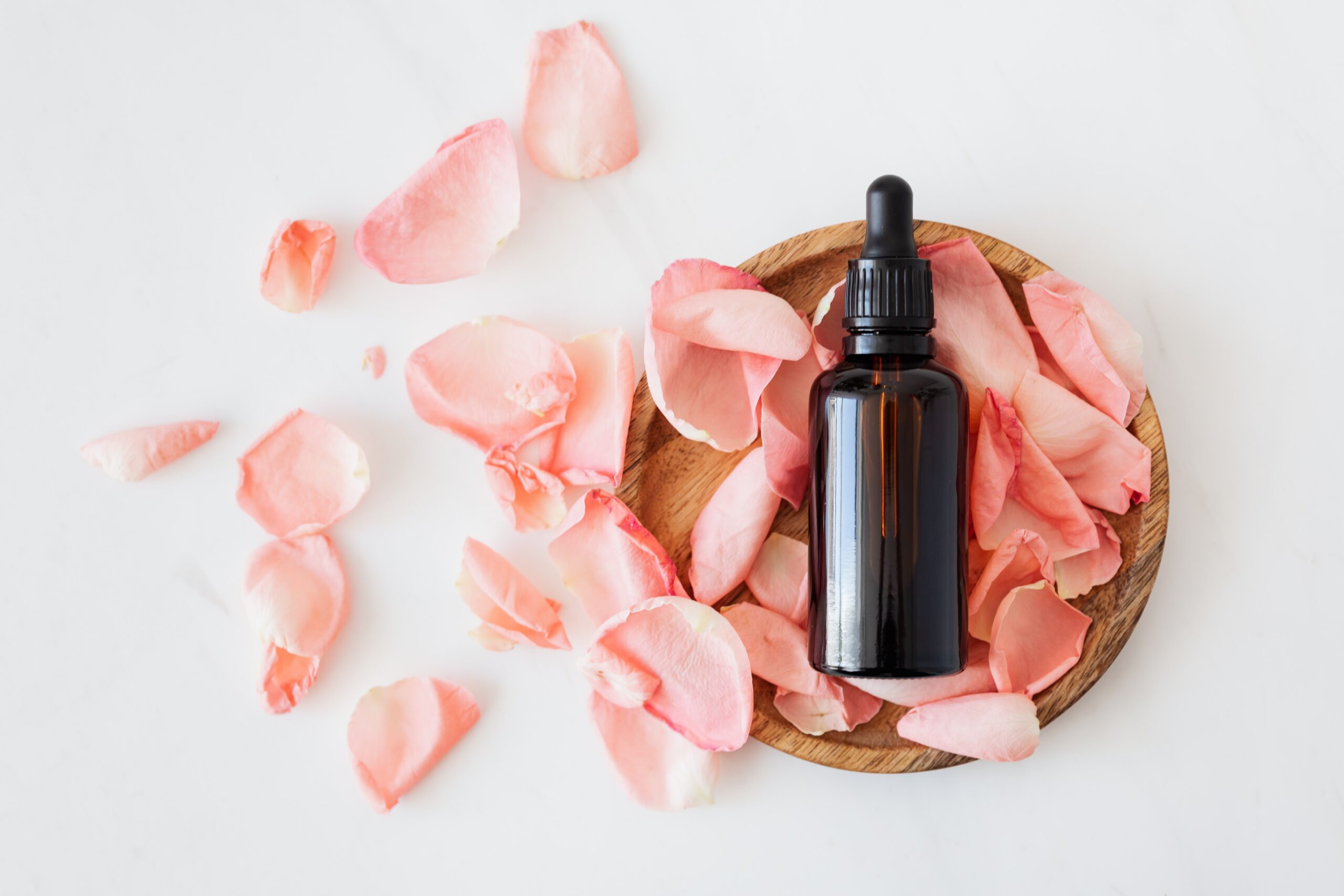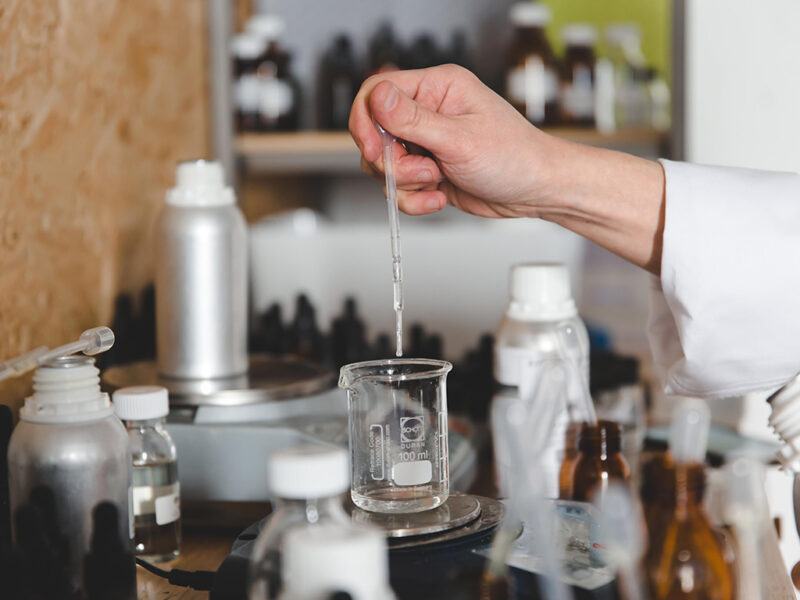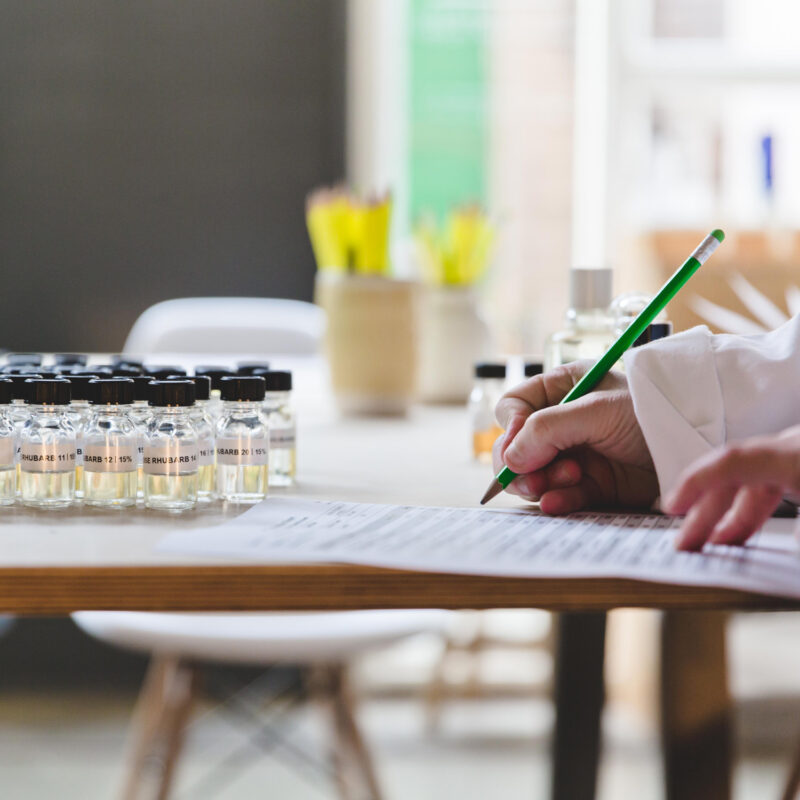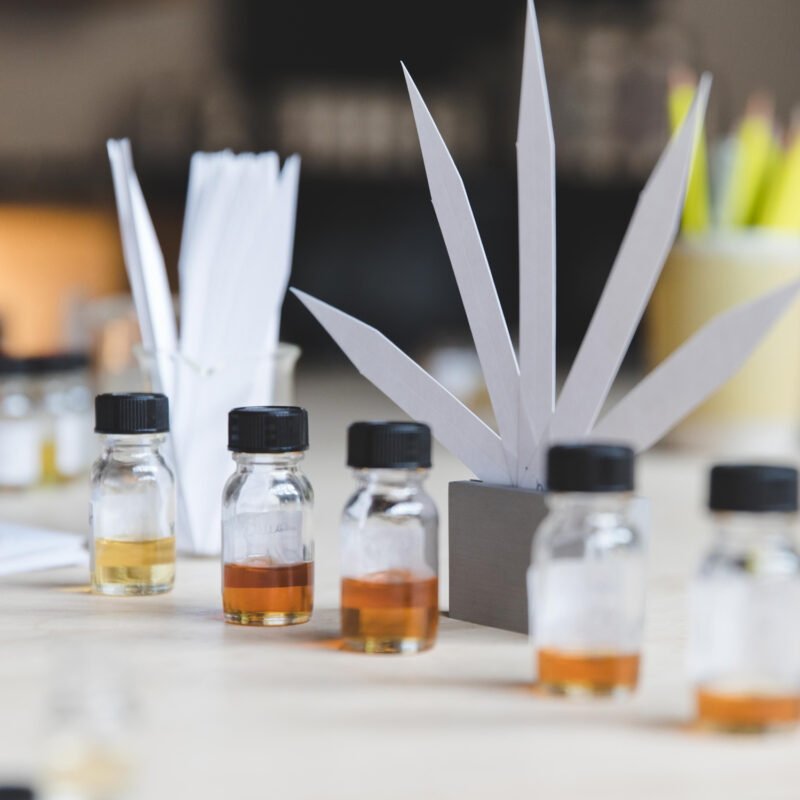Perfumery is known to be quite a closed world and it can be difficult to know how to start learning as a hobby or profession. We detailed some fantastic ways on how to create in our previous article, but what if you want to learn an in-depth study of perfumery from home? Here are our six steps on how to get started learning perfumery from home, all of which are covered in our Online Creation Courses!
1. Learn how to Describe Ingredients
The first essential step for any budding perfumer is learning how to describe what you are smelling! Smell is a sense that we use constantly, sometimes without even realising it, so why is it that when we try to describe what we are smelling, we seem to not be able to come up with the correct words? We can so easily describe what we see, touch, taste and feel, but when describing scent we often rely on a simple “I like it” or, “I don’t like it”.
Understanding to describe perfumery ingredients is the key to know how to use them. Let’s take rose for example. We can describe rose simply as a floral note, but when we open our minds and noses, rose can also be described as green, spicy, fruity, powdery, deep, fresh or honeyed. When we understand these different facets, we can then begin to use ingredients more creatively in a formula!
Start by getting some perfumery materials from a reputable supplier, or from us in our Ingredient Box Sets and Online Video Courses Kits and smell them often, writing down anything that comes to mind! Each time you smell an ingredient you will uncover new and exciting facets that you may not have smelled before! Remember, the best way to smell ingredients is diluted in alcohol and on a scent strip, not from the bottle or in pure form!
If you need some help to get started? Join us on a few olfactive explorations in our online courses and smell the ingredients with us!
2. Learn to Categorise Ingredients
Once we know how to describe what we are smelling, we then must able to group similar ingredients together. We do this by olfactive characteristics, volatility (top, mid and base notes) and type (natural, molecule and accords). With thousands of ingredients available to the perfumer, it is essential to be able to classify and categorise them in a way that’s helpful to the formulation process and most importantly, easy to remember!
The simplest way to categorise ingredients is by fragrance family. Families are groupings of ingredients that share a commonality in their smell and instantly allow us to have a general idea of what we are smelling. Fragrance families include the floral, woody, spicy, fruity, and musky, among many others. Categorising ingredients in a specific family is not a hard and fast rule, and there are many ingredients that have facets that belong to multiple families, so every perfumer may group ingredients slightly different and in a way that best suits them!
Play perfumer at home and learn about fragrance families
3. Set up your workspace
The next essential step on your journey into perfumery is setting up a workspace and understanding the basic practical works done by perfumers! To get started in perfumery you luckily do not need a lot of expensive equipment right away. Besides your ingredients, a simple scale and some lab materials like pipettes, scent strips, beakers, and some empty bottles will do just fine in the beginning!
Once you have your workspace set up, you will need to know how to prepare dilutions! As perfumers, understanding how and why we create dilutions is fundamental to developing a fragrance formula! We dilute ingredients in different solvents to understand their full olfactive characteristics, to control their strength and impact in a formula and then adapt our finished formulas into applications such as fine fragrance, candles and body care!
Join us in our online course to watch step-by-step tutorials on how to set up a lab at home and prepare common dilutions used in perfumery!
4. Create a Brief
Before beginning to work on a fragrance, a perfumer must create or be presented a brief, which is the creative starting point from which every fragrance is born! Independent perfumers launching their own fragrances will usually create their own briefs, however perfumers within big companies in the fragrance industry will execute briefs provided by the client and marketing team!
A brief can be as simple or creative as you like! You may simply wish to create a fresh, citrus fragrance with notes of cotton, and clean white musks, or you may want to flex your creative muscles and make a fragrance based around a feeling or memory!
Once you have a finished brief, you can then begin to select ingredients that will help bring your idea to life. If you want to create a fresh and clean fragrance, you’d likely select some citrus notes, transparent florals and clean white musks!
5. Learn to Create Accords
Accords are short formulas of ingredients used to recreate a single smell or creative idea! Learning to create accords is often the starting point for perfumers when learning how to formulate. As perfumers, we use accords when we are unable to use certain ingredients due to price restrictions or if a particular smell is unable to be extracted naturally. It is also possible to formulate an accord based on a creative idea rather than a single smell, for example the smell of fresh rain!
When creating an accord, think about a few different ingredients that can convey your idea – an accord doesn’t have to be complicated! Sure, developing a rose accord can involve well over a dozen ingredients, but when you’re starting out it is best to keep it simple! If you want to create the smell of fresh rain for example, you can combine watery notes like Calone with earthy patchouli essential oil and green molecules like cis-3-hexenol!
6. Formulate More Complex Formulas
Once you have a solid understanding of the fundamentals of ingredients and formulating accords, you are ready to take on the challenge of creating more complex formulas! Finished fragrance formulas can have anywhere between a dozen to one hundred or more ingredients! When formulating, it’s important to approach every ingredient with a critical eye and be able to explain why you are adding it to the formula and what impact you intend for it to have. This is why it is so important to understand and be able to describe your ingredients well!
You must also think about how you would like to structure your formula. Do you want a deeper fragrance? Perhaps add a higher percentage of base notes like woods or musks. Maybe you want to create a fragrance that’s bright, fresh and impactful. In this case you would want to choose more ingredients that have a fresh and strong impact on the top of your fragrance.
It sometimes takes the perfumer hundreds of trials before they feel a fragrance is ready for market, so don’t be discouraged if your fragrance isn’t perfect on the first try! When doing reworks of your formula, only change one or two ingredients at a time and smell your trials side by side so you can truly see the impact of your changes. Never be discouraged if your new trial isn’t as good as the last one, because perfumery is all about experimentation.
Join our Creation Course
Check out our free online miniclass or dive deeper with our Fundamentals of Perfume Creation course where our expert noses will guide you every step of the way in your perfumery journey!
Join now